A History of New York State Winemaking
From 1677 French Huguenot settlements to modern excellence, discover 350+ years of winemaking heritage preserved in the Hudson Valley
The history of NY wine begins not with modern boutique wineries, but with courageous French Huguenot settlers who planted the first documented vineyards in 1677, establishing what would become America’s second-oldest wine region. This remarkable journey spans more than three centuries, from those early old NY vineyards pioneers established to today’s sophisticated expressions of New York terroir—including award-winning heritage grape varieties that continue to tell the story of American viticultural resilience.
The winemaking evolution in New York State tells a story of resilience, innovation, and cultural preservation that extends far beyond simple grape cultivation. From the pre-Revolutionary farmhouse that still stands on Milea Estate Vineyard’s property to the cutting-edge sustainable practices employed today, this heritage represents an unbroken chain of agricultural excellence and American ingenuity. This legacy lives on through families like the Mileas, whose New York wine heritage mirrors the broader immigrant story that shaped American winemaking, continuing to define New York’s unique position in the global wine landscape.
Table of Contents
- Colonial Beginnings: The French Huguenot Legacy (1677-1800)
- Immigration and Innovation: The 19th Century Transformation
- Prohibition’s Impact: Survival and Perseverance (1920-1933)
- Post-Prohibition Renaissance: The Modern Revival
- AVA Development and Regional Recognition
- Contemporary Innovation: Preserving Heritage for the Future
Colonial Beginnings: The French Huguenot Legacy (1677-1800)
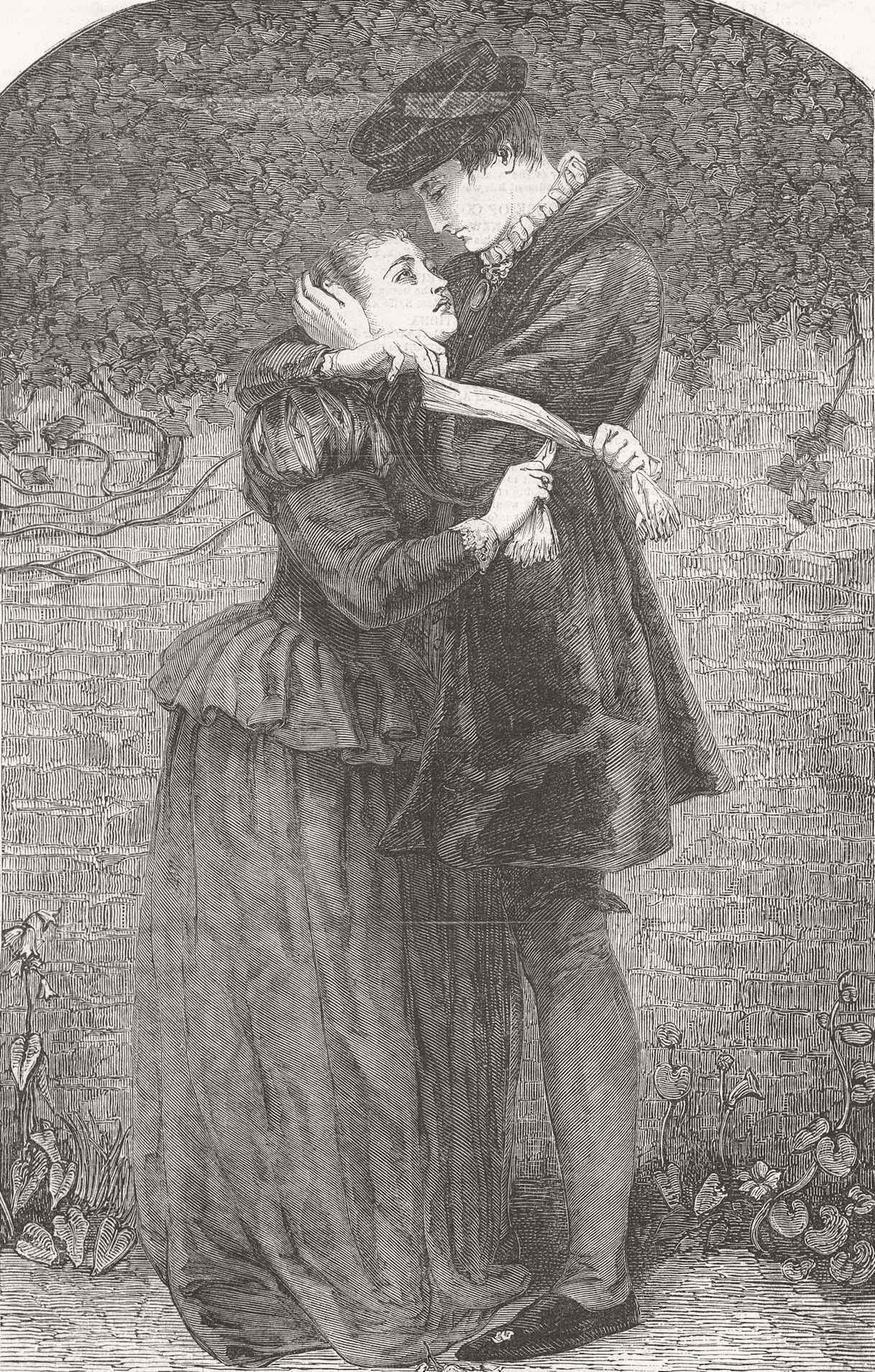
The remarkable history of NY wine begins with religious refugees seeking freedom in the New World. In 1677, French Huguenot settlers established the first documented vineyards in the Hudson River Valley, bringing with them centuries of European winemaking knowledge and an unwavering commitment to their craft. These pioneering vintners chose the Hudson Valley not by accident, but through careful observation of the region’s unique terroir—the same geological and climatic conditions that continue to define exceptional New York wines today.
The Huguenots’ initial plantings utilized native American grape varieties alongside attempts to cultivate European Vitis vinifera. While the harsh winters and unfamiliar diseases proved challenging for traditional European varieties, these early settlers demonstrated remarkable adaptability, developing techniques that would influence winemaking evolution for centuries to come. Their persistence laid the foundation for what would become a distinctly American approach to viticulture—one that balanced Old World traditions with New World innovation, as documented in historical records preserved in our national archives.
By the mid-1700s, vineyards dotted the Hudson Valley landscape from New Paltz to Albany. The connection between these historical roots and modern New York winemaking is perhaps nowhere more evident than at properties like Milea Estate Vineyard, where the Staatsburg House—built in 1747—stands as a testament to this agricultural heritage. This colonial farmhouse, originally constructed by farmers who were contemporaries of those early Huguenot vintners, represents the continuity of agricultural excellence that has defined the region for over 275 years. Today, this same property continues the Hudson Valley wine history tradition through Milea’s acclaimed Hudson Heritage Collection, which preserves and elevates the very heritage grape varieties that sustained winemaking through centuries of challenge.
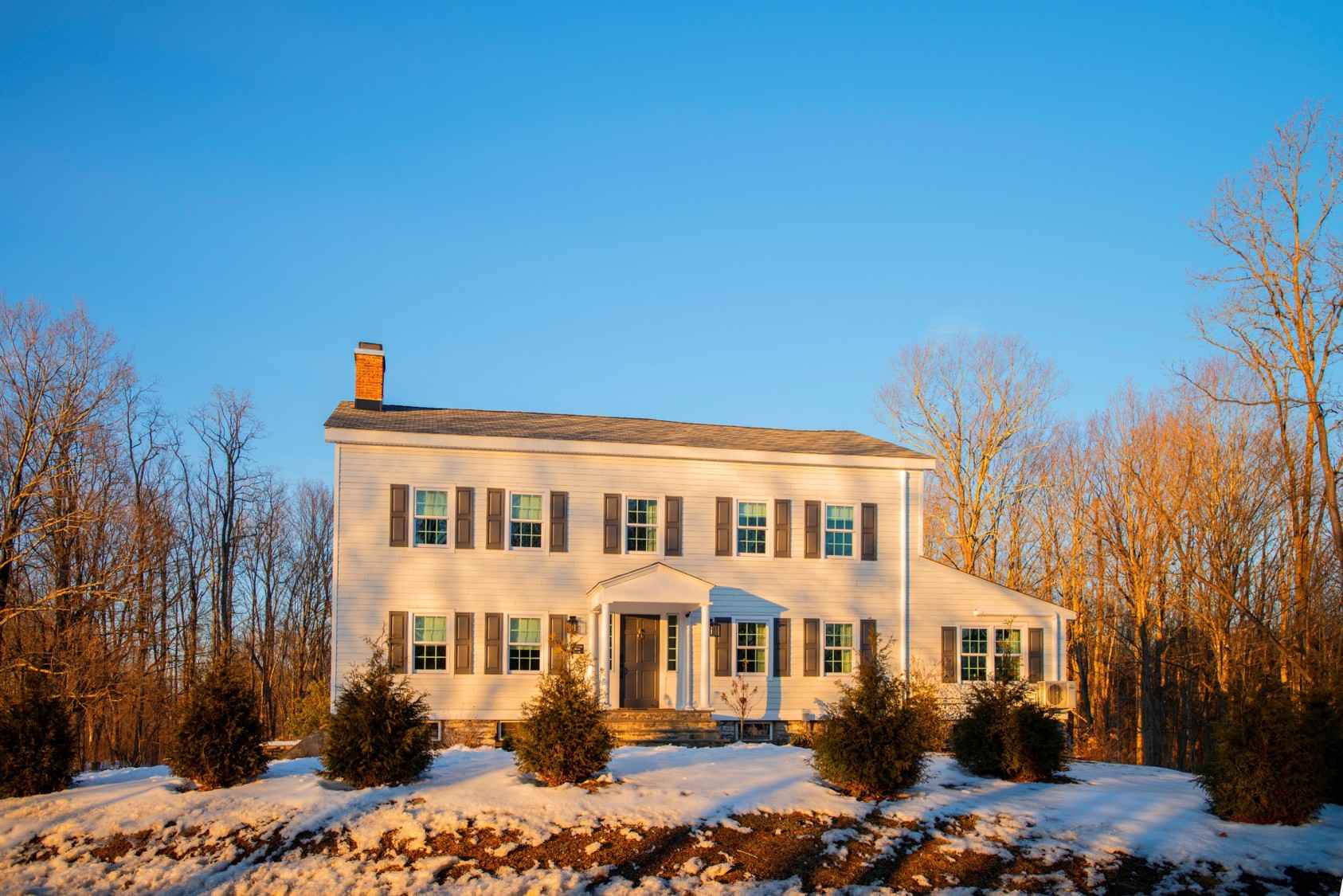
The Revolutionary War period brought both challenges and opportunities for Hudson Valley vintners. While some vineyards were damaged during British raids, the war also created demand for locally produced beverages, encouraging expansion of winemaking operations. George Washington himself noted the quality of Hudson Valley wines in his correspondence, praising their potential to rival European productions.
Archaeological evidence from this period reveals sophisticated winemaking equipment, including wine presses constructed from local Hudson Valley stone and oak aging vessels crafted by skilled colonial cooperages. These artifacts, many of which can be found in regional historical societies, demonstrate that early New York winemakers were producing wines of considerable quality and complexity, challenging the notion that American wine excellence is a purely modern phenomenon. This tradition of quality and innovation continues today through modern expressions of heritage grape varieties that honor this colonial legacy.
1677: First Documented Plantings
French Huguenot settlers establish vineyards in New Paltz, beginning America’s second-oldest wine region with European varieties and native grapes that would evolve into today’s heritage collection.
1747: Agricultural Heritage
The Staatsburg House is built, representing the agricultural prosperity that viticulture brought to Hudson Valley farming communities—now home to Milea Estate’s award-winning heritage wines.
1700s: Regional Recognition
Hudson Valley wines gain recognition throughout the colonies, with records showing trade as far south as Virginia and north to Vermont, establishing the quality tradition continued today.
Immigration and Innovation: The 19th Century Transformation
The 19th century marked a revolutionary period in the history of NY wine, characterized by waves of European immigration that brought new techniques, grape varieties, and winemaking philosophies to the Empire State. This era of transformation mirrors the story of families like the Mileas, whose journey from Italy to New York exemplifies the immigrant experience that would define American winemaking. Immigration records show that German immigrants, fleeing political upheaval in their homeland, arrived in the 1840s and 1850s with extensive experience in Rhine Valley viticulture. They immediately recognized the potential of the Finger Lakes region, with its deep glacial lakes creating microclimates remarkably similar to their European homeland.
The German Influence: Finger Lakes Development
German settlers like the Reverend William Bostwick established the first commercial winery around Keuka Lake in 1829, marking the beginning of systematic viticulture in the Finger Lakes. These immigrants brought with them not just winemaking knowledge, but also a deep understanding of site selection, canopy management, and fermentation techniques that would revolutionize New York wine production. Their influence extended beyond technique to include the introduction of German grape varieties that proved better adapted to New York’s climate than traditional French varieties, creating the foundation for the heritage grape varieties that continue to define New York wine excellence today, as documented by agricultural census data from this period.
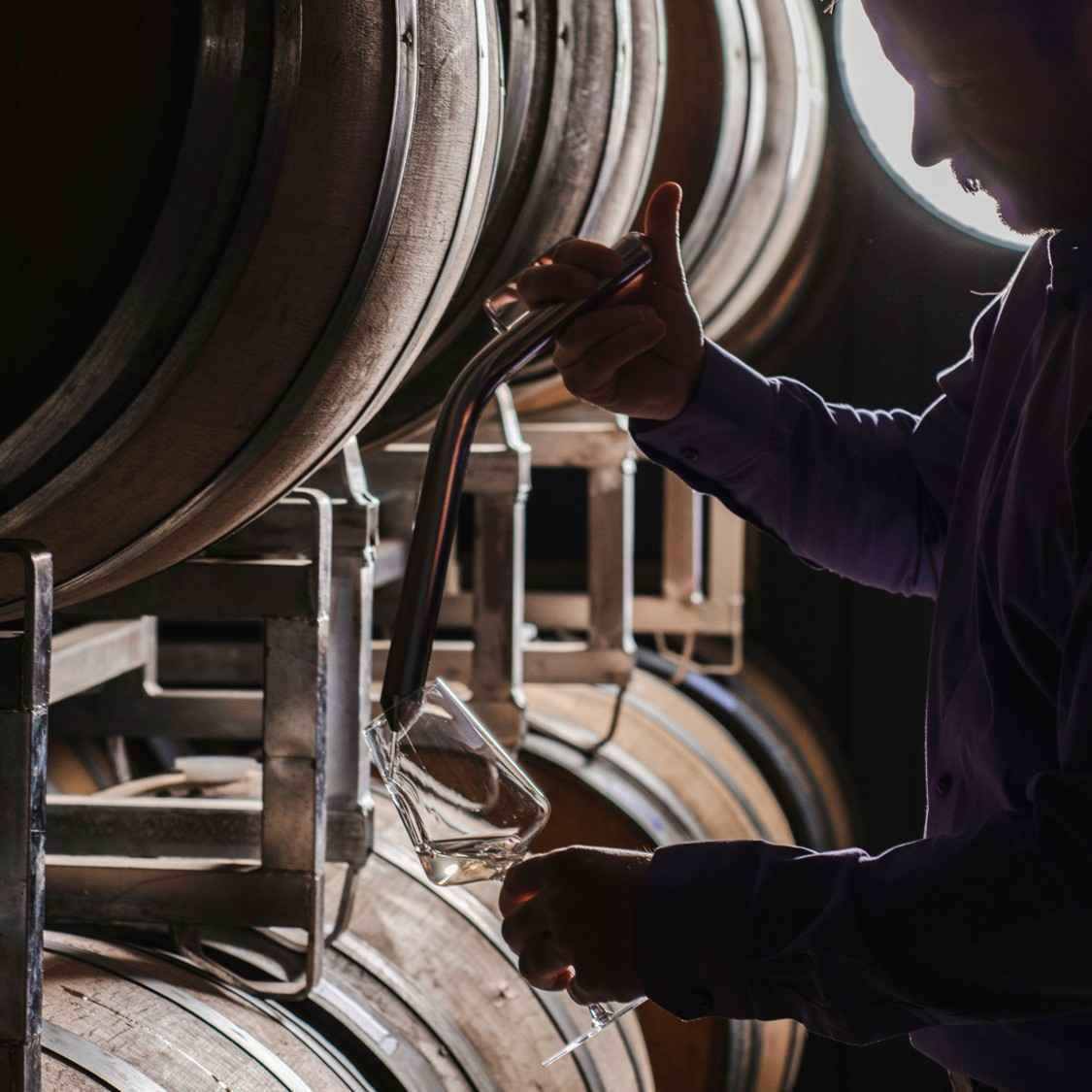
The period from 1860 to 1890 witnessed an explosion of viticultural innovation across New York State. Italian immigrants, primarily from Northern Italy’s Piedmont region, brought expertise in mountain viticulture that proved invaluable in New York’s challenging terrain. Much like Anthony Milea, who would later arrive in the early 20th century after the devastating 1908 Messina earthquake, these immigrants established some of the earliest commercial operations in the Hudson Valley and Long Island, contributing techniques for training vines on steep slopes and managing cool-climate fermentation that are still employed in modern New York winemaking.
The Birth of American Hybrid Varieties
Perhaps no development was more significant for winemaking evolution in New York than the systematic development of French-American hybrid grape varieties. Pioneering horticulturists like T.V. Munson in Texas and Hermann Jaeger in Missouri began crossing European Vitis vinifera with native American species to create varieties that could survive harsh winters while maintaining wine quality. As detailed in comprehensive studies of American wine development, these efforts culminated in varieties like Seyval Blanc, Vidal Blanc, and Chambourcin—grapes that would become synonymous with New York wine excellence and are now celebrated through collections like Milea Estate’s Hudson Heritage wines.
The success of these hybrid varieties cannot be overstated. While California could rely on Mediterranean-like conditions to grow traditional European grapes, New York’s continental climate demanded innovation. The development of cold-hardy, disease-resistant varieties allowed old NY vineyards had established to expand dramatically, creating a truly sustainable wine industry that could weather both literal and metaphorical storms. These same varieties that sustained immigrant families through challenging times now produce award-winning wines like Milea’s 93-point Wine Enthusiast honored old vine Seyval Blanc, sourced from vines originally planted in 1974, demonstrating the enduring quality potential of these heritage grape varieties. Modern sustainable viticulture practices continue to build upon these early innovations.
Railroad expansion during this period proved crucial to New York wine’s commercial success. The completion of rail lines connecting the Finger Lakes to New York City in the 1850s opened vast new markets for New York wines. By 1880, according to American wine industry statistics, New York was producing over 2 million gallons of wine annually, much of it shipped via rail to urban markets throughout the Northeast and Midwest. This infrastructure would later prove essential for immigrant families establishing their agricultural operations in the Hudson Valley.
Prohibition’s Impact: Survival and Perseverance (1920-1933)
The enactment of Prohibition in 1920 represented perhaps the greatest challenge in the entire history of NY wine, threatening to destroy centuries of viticultural progress overnight. As documented by the National Constitution Center, this period devastated wine industries nationwide, but New York’s wine industry demonstrated remarkable resilience and creativity in surviving these thirteen dark years. This era particularly tested immigrant families like the Mileas, who had recently established their agricultural operations in the Hudson Valley following Anthony Milea’s arrival after the 1908 Messina earthquake, employing strategies that would ultimately strengthen the industry’s foundation for future growth.
Unlike many wine regions that simply abandoned viticulture during Prohibition, New York vintners adapted their operations to remain economically viable. Many converted their vineyards to table grape production, shipping fresh grapes to urban markets where home winemaking remained legal. The Finger Lakes region, in particular, benefited from strong transportation networks that allowed growers to supply grape markets throughout the Northeast. Families who had cultivated heritage grape varieties found these French-American hybrids particularly well-suited for this dual purpose, as they could serve both as quality table grapes and provide excellent fruit for home winemakers, as detailed in New York wine industry records.
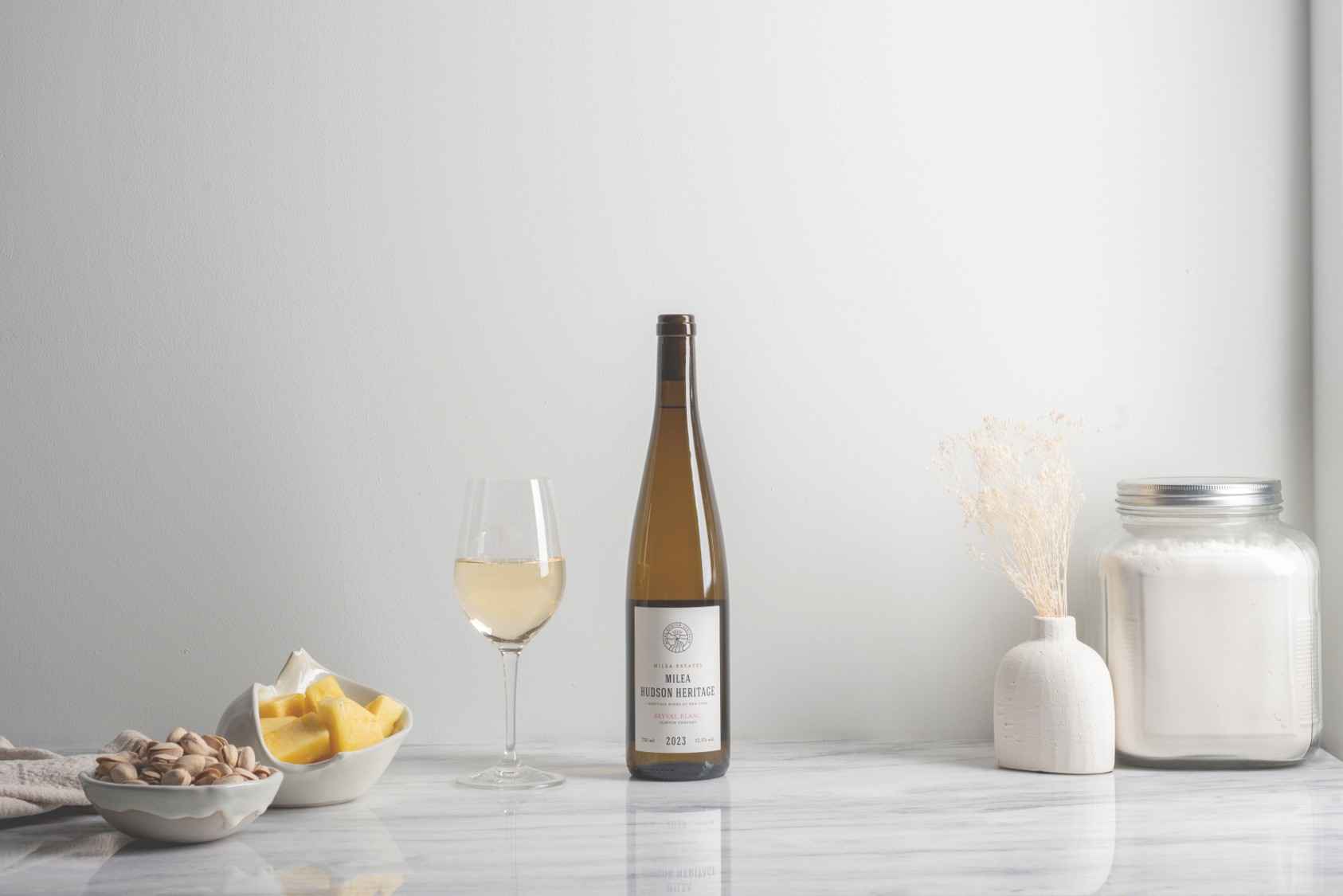
Religious exemptions for sacramental wine provided another lifeline for New York producers. Several established wineries maintained limited production for religious ceremonies, allowing them to preserve their winemaking equipment, maintain their vine stock, and, perhaps most importantly, retain their specialized knowledge through these challenging years. The winemaking evolution during this period included innovations in grape preservation and concentrate production that would prove valuable long after Prohibition’s repeal. These techniques helped preserve the genetic diversity of varieties that now form the foundation of collections like Milea’s award-winning Hudson Heritage wines.
Underground Networks and Cultural Preservation
Perhaps most remarkably, many old NY vineyard families had established continued to maintain their heritage vine stock in secret, preserving genetic diversity that might otherwise have been lost forever. Small family operations in the Hudson Valley and Finger Lakes quietly tended heritage varieties, passing down traditional winemaking knowledge through oral tradition and clandestine practice. This period of hidden cultivation created the old vine plantings that now produce some of New York’s most distinguished wines, including the old vine Seyval Blanc that has earned critical acclaim for its exceptional depth and complexity—a testament to the power of preservation through adversity.
The end of Prohibition in 1933 found New York’s wine industry damaged but not destroyed. Unlike regions that had completely abandoned viticulture, New York maintained enough infrastructure and knowledge to begin immediate recovery. However, the path back to pre-Prohibition production levels would prove long and challenging, requiring new approaches to marketing, distribution, and consumer education.
Many of the hybrid grape varieties that would later define New York wine excellence were actually developed or refined during the Prohibition era, as growers sought varieties that could serve dual purposes as both table grapes and wine grapes. This pragmatic approach to varietal selection would prove prescient, as these same varieties would become the foundation of New York’s modern wine renaissance, producing wines like the 93-point Wine Enthusiast awarded Chambourcin that now represents the pinnacle of heritage grape varieties achievement in contemporary New York winemaking.
Post-Prohibition Renaissance: The Modern Revival
The period from 1933 to 1976 marked a gradual but determined recovery in the history of NY wine, culminating in legislation that would transform the industry forever. While the immediate post-Prohibition years were challenging, with many consumers having developed preferences for spirits and beer during the dry years, New York vintners worked systematically to rebuild both quality and reputation. This era saw families like the Mileas expand beyond fruit growing to establish the foundations for what would become their winemaking legacy, developing through innovative tourism experiences and educational programs that connected consumers with the rich agricultural heritage of the Hudson Valley.
The 1940s and 1950s saw significant technological advances in winemaking throughout New York State. Temperature-controlled fermentation, improved crushing equipment, and better understanding of malolactic fermentation allowed producers to create wines of unprecedented consistency and quality. Pioneering wineries like Brotherhood Winery in the Hudson Valley and Finger Lakes producers began winning regional competitions, slowly rebuilding consumer confidence in New York wines. During this period, the careful preservation of heritage grape varieties through the dark years began to pay dividends, as winemakers rediscovered the exceptional quality potential of varieties like Seyval Blanc and Chambourcin, as documented in contemporary wine publications.
The Revolutionary Farm Winery Act of 1976
No single piece of legislation has had greater impact on New York wine than the Farm Winery Act of 1976. This groundbreaking law allowed small producers to sell wine directly to consumers at their farms, fundamentally changing the economics of winemaking and creating the foundation for modern wine tourism. The legislation recognized that small family wineries needed different regulatory treatment than large commercial operations, establishing a framework that would be copied by wine regions worldwide. This act would prove crucial for properties like the historic Rymph Family Farm, which Joe and Barry Milea would later purchase as an homage to their forefathers, creating the foundation for what would become Milea Estate Vineyard’s commitment to preserving New York wine heritage, now regulated by federal oversight.
The immediate impact was dramatic. Within five years of the Act’s passage, the number of licensed wineries in New York increased from fewer than 20 to over 60. More importantly, the law encouraged a new generation of winemakers who combined traditional techniques with modern innovation, creating wines that could compete on national and international stages. This renaissance period saw renewed interest in the heritage grape varieties that had sustained New York winemaking through its most challenging periods, leading to the development of award-winning wines that would eventually earn recognition like the 93-point Wine Enthusiast scores now achieved by carefully crafted expressions of these historic varieties.
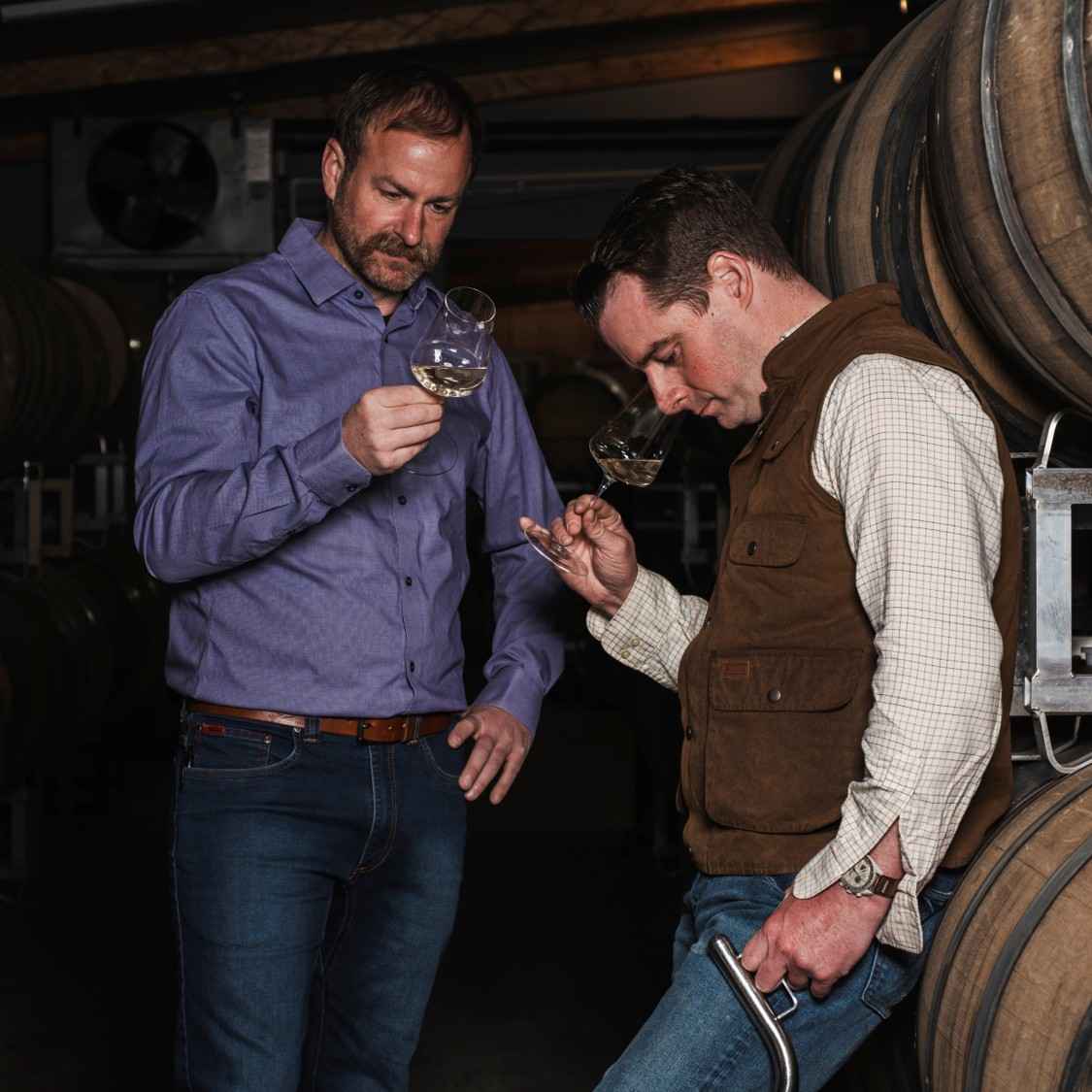
The winemaking evolution during this period included significant advances in viticultural practices specific to New York’s climate. Researchers at Cornell University’s viticulture program developed new training systems, disease management protocols, and harvesting techniques that maximized quality while managing the challenges of continental climate viticulture. This scientific approach to winemaking continues today through collaborations with modern winemakers like River Allan, who combine Cornell education with practical experience to elevate traditional varieties to new heights of excellence, creating wines that honor the past while embracing contemporary winemaking precision.
This period also saw the emergence of serious Vitis vinifera cultivation in New York, particularly on Long Island where the maritime climate proved more conducive to traditional European varieties. The establishment of successful Cabernet Sauvignon, Merlot, and Chardonnay vineyards expanded New York’s varietal palette while maintaining the state’s commitment to hybrid varieties that had proven their worth over decades of cultivation. The success of both approaches demonstrated that New York’s winemaking evolution could embrace diversity while maintaining its distinctive character rooted in heritage grape varieties.
By the late 1970s, New York wines were beginning to receive national recognition from publications like international wine magazines. Wine critics noted the unique character of New York Riesling, the elegance of Hudson Valley Cabernet Franc, and the distinctive personality of hybrid varieties like Seyval Blanc and Vidal Blanc. This recognition encouraged further investment in quality improvements and marketing efforts that would lay the groundwork for the next phase of New York wine development, supported by state tourism initiatives. Properties like the future Milea Estate were perfectly positioned to benefit from this renaissance, combining historical significance with modern winemaking potential.
AVA Development and Regional Recognition
The establishment of American Viticultural Areas (AVAs) marked a crucial milestone in the history of NY wine, providing official recognition of the distinct terroir that had been driving quality for centuries. The first New York AVA, the Hudson River Region, was designated in 1982, formally acknowledging what French Huguenot settlers had recognized over 300 years earlier—this region possessed unique characteristics that produced distinctive wines. This designation proved particularly significant for properties like Milea Estate, where the same terroir that sustained agricultural operations since Anthony Milea’s time would now gain official recognition for its exceptional potential to produce world-class heritage grape varieties, as recognized by international wine organizations.
The Hudson River Region AVA: Honoring Historical Significance
The Hudson River Region AVA encompasses the same areas where those pioneering old NY vineyards had established in the 17th and 18th centuries. This designation recognized not just geological and climatic factors, but also the continuous viticultural tradition that had persisted through wars, Prohibition, and economic upheaval. The AVA boundaries follow the river valley’s unique microclimate, where the Hudson River’s moderating influence and the region’s slate and shale soils create ideal conditions for both hybrid varieties and select vinifera grapes. This terroir proves particularly suited to the cultivation of heritage grape varieties like the old vine Seyval Blanc that now produces 93-point Wine Enthusiast awarded wines, demonstrating how historical variety selection continues to yield exceptional results in this distinctive Hudson Valley wine history landscape, contributing significantly to regional tourism and economic development.
Within the Hudson River Region AVA, properties like Milea Estate Vineyard represent the perfect marriage of historical significance and modern excellence. The estate’s 1747 Staatsburg House sits on land that has been continuously farmed for over 275 years, embodying the agricultural heritage that the AVA designation seeks to preserve and promote. Today, this same property produces some of New York’s most acclaimed Hudson Heritage wines, including the award-winning Chambourcin that earned 93 points and Editor’s Pick recognition from Wine Enthusiast, proving that the marriage of historical terroir and modern winemaking expertise can achieve unprecedented quality levels.
Finger Lakes and Long Island Recognition
The Finger Lakes AVA, established in 1982, and the subsequent North Fork of Long Island AVA (1986) provided similar recognition for these distinct regions. Each AVA acknowledged unique characteristics that had been shaped by both geological history and centuries of agricultural practice. The winemaking evolution accelerated dramatically following these designations, as producers gained confidence to invest in quality improvements and varietal experimentation, including serious exploration of how traditional heritage grape varieties could achieve new levels of excellence in their designated terroirs.
The AVA system also encouraged specialization based on regional strengths. The Finger Lakes became renowned for Riesling and other aromatic white varieties, Long Island developed expertise with Bordeaux varieties, and the Hudson Valley continued its tradition of producing exceptional hybrid wines while exploring the potential of Cabernet Franc and other cool-climate reds. This specialization allowed each region to develop distinct identities while maintaining shared commitment to quality and innovation in New York wine heritage preservation.
This period saw unprecedented collaboration between New York wine regions, with producers sharing knowledge about clone selection, viticultural practices, and winemaking techniques. Annual conferences and tasting events created a sense of statewide wine community that strengthened the entire industry while celebrating regional distinctiveness. The success of heritage grape varieties in achieving critical recognition helped establish New York as a region capable of producing world-class wines from both traditional and innovative grape selections, contributing to the overall elevation of the state’s wine reputation.
Timeline of New York Winemaking History
Contemporary Innovation: Preserving Heritage for the Future
Today’s chapter in the history of NY wine is being written by producers who understand that innovation and tradition are not opposing forces, but complementary aspects of viticultural excellence. Modern New York wineries combine cutting-edge technology with time-tested methods, creating wines that honor the past while embracing the future of sustainable agriculture and climate-conscious winemaking. This philosophy is perhaps nowhere more evident than at properties like Milea Estate, where the family legacy that began with Anthony Milea’s agricultural vision continues through Barry and Sang Milea’s commitment to preserving heritage grape varieties while achieving contemporary excellence, supported by ongoing research from institutions like the American Journal of Enology and Viticulture.
The Heritage Preservation Movement
Perhaps nowhere is this philosophy more evident than in the heritage preservation efforts exemplified by collections like Milea Estate Vineyard’s Hudson Heritage wines. These programs actively cultivate and vinify historic grape varieties that played crucial roles in New York’s winemaking evolution, ensuring that varieties like Seyval Blanc, Chambourcin, and other French-American hybrids remain viable for future generations. The success of this approach is demonstrated through wines like Milea’s 93-point Wine Enthusiast awarded old vine Seyval Blanc, sourced from Clinton Vineyard plantings dating to 1974, and their exceptional 93-point Hudson Heritage Chambourcin, which earned Editor’s Pick recognition—proving that heritage grape varieties can achieve the highest levels of contemporary wine excellence.
Under the guidance of internationally experienced viticulturists like Russell Moss, who brings expertise from New Zealand, Oregon, and Burgundy to Hudson Valley terroir, modern New York wineries are achieving unprecedented quality while maintaining their commitment to traditional varieties. This global perspective, combined with deep respect for local heritage and the agricultural legacy established by families like the Mileas, represents the culmination of centuries of viticultural development. The Milea family’s journey from Anthony’s early 20th-century farm to today’s acclaimed winery mirrors the broader evolution of New York wine heritage, demonstrating how immigrant traditions and American innovation continue to create exceptional expressions of terroir.
Contemporary winemaking at heritage-focused properties employs techniques that would be familiar to those early Huguenot settlers while incorporating modern understanding of fermentation science, soil biology, and sustainable agriculture. The result is wines that express terroir with greater clarity than ever before while maintaining the distinctive character that has defined New York wine for over three centuries. The critical acclaim achieved by wines like Milea’s award-winning heritage grape varieties demonstrates that traditional grapes, when cultivated with modern precision and historical wisdom, can produce wines that compete at the highest international levels. Visitors can experience this philosophy firsthand through educational tastings and tours that connect the dots between historical agriculture and contemporary wine excellence.
Climate Change and Adaptation
Modern New York viticulture faces challenges that echo those confronted by earlier generations—adapting to changing conditions while maintaining quality and character. Climate change has brought both opportunities and challenges, with longer growing seasons allowing for greater varietal diversity while requiring new approaches to water management and disease prevention. The heritage approach to grape selection provides valuable insights for this adaptation, as heritage grape varieties like those preserved in collections such as Milea’s Hudson Heritage wines were specifically selected for their resilience and adaptability to challenging conditions.
The lessons learned from centuries of hybrid variety development are proving invaluable in this adaptation. New York’s tradition of working with grape varieties specifically selected for local conditions provides a roadmap for climate resilience that other wine regions are beginning to study and emulate. The success of wines like the 93-point Chambourcin demonstrates that these historically important varieties continue to offer solutions for contemporary challenges while producing wines of exceptional quality and character.
Sustainable farming practices pioneered in New York are gaining international recognition. Integrated pest management, cover crop utilization, and biodiversity preservation—all traditional components of New York viticulture developed through generations of families like the Mileas—are now recognized as essential tools for addressing 21st-century agricultural challenges. The continuation of the Milea family’s agricultural legacy through modern sustainable winemaking practices exemplifies how historical wisdom and contemporary innovation can work together to address current environmental concerns.
Educational Leadership and Wine Tourism
Modern New York wineries have embraced their role as educational institutions, teaching visitors about the rich history of NY wine while demonstrating sustainable practices and heritage preservation. Properties like Milea Estate, with their colonial farmhouses and heritage wine collections, provide immersive experiences that connect contemporary wine lovers with centuries of agricultural tradition while showcasing how families like the Mileas have contributed to this ongoing story. The estate’s culinary program, led by Executive Chef David Kim, demonstrates how traditional food and wine pairing continues to evolve while honoring the agricultural heritage that produces award-winning expressions of heritage grape varieties.
This educational approach extends beyond tourism to serious academic research. Collaborations between wineries and institutions like Cornell University continue to advance understanding of cool-climate viticulture, heritage variety cultivation, and sustainable winemaking practices. These partnerships ensure that New York’s viticultural knowledge continues to evolve while remaining grounded in historical wisdom, with findings that help explain how wines like Milea’s 93-point Heritage wines achieve their exceptional quality through the marriage of traditional varieties and modern techniques, with findings published in peer-reviewed research journals.
Wine enthusiasts can deepen their understanding of this heritage through membership programs that provide ongoing education about historical varieties and traditional winemaking methods, or by purchasing heritage wines that represent centuries of viticultural evolution. The success of award-winning heritage grape varieties like those featured in Milea’s Hudson Heritage Collection demonstrates that the future of New York wine heritage lies not in abandoning tradition, but in elevating it through careful cultivation, modern technique, and unwavering commitment to quality—a philosophy that honors both the early Huguenot settlers and the immigrant families like the Mileas who have continued to shape this remarkable wine region.
Frequently Asked Questions About New York Wine History
Experience Living Wine History
Ready to taste 350+ years of New York winemaking heritage? Visit Milea Estate to experience award-winning heritage grape varieties, traditional methods, and the continuing story of American viticulture in our 1747 colonial farmhouse setting where the Milea family legacy honors both immigrant tradition and viticultural innovation.
Explore New York’s wine heritage through award-winning expressions:
